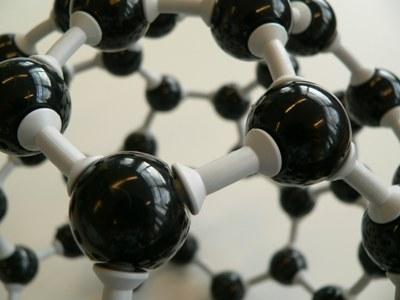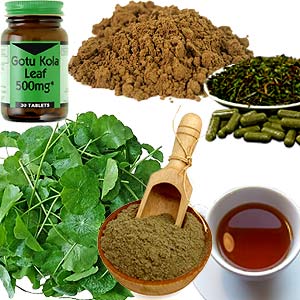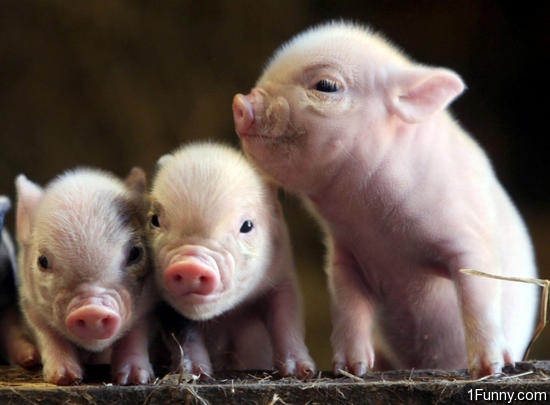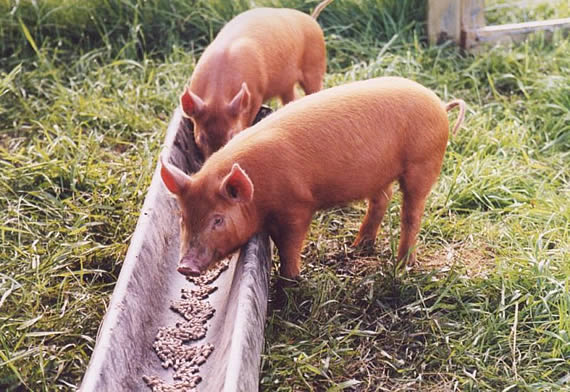by Romanes, May Anne Joy D., Balita, Marlon, Deñado, Emerson and Calleja, Charles
(October 2008, Cavite State University Main Campus)
Introduction
 Gotu kola (Centella
asiatica) is a prostrate, sparingly hairy or nearly smooth herb, which
grows from about 3 to 15 cm. Long. Its
leaves are small (2–5 cm. wide), rounded to reniform, horizontal, more or less
cupped, rounded at tip, kidney–shaped or heart–shaped at base and brightly
green in color. Its flowers are purple,
ovate and are about 1 mm. in length. The
fruits are minute, ovoid, maybe white or green and reticulate with 9 subsimilar
longitudinal ridges. Gotu Kola is often
found in damp, open grasslands, rice paddy banks and along the streams
throughout the
Gotu kola (Centella
asiatica) is a prostrate, sparingly hairy or nearly smooth herb, which
grows from about 3 to 15 cm. Long. Its
leaves are small (2–5 cm. wide), rounded to reniform, horizontal, more or less
cupped, rounded at tip, kidney–shaped or heart–shaped at base and brightly
green in color. Its flowers are purple,
ovate and are about 1 mm. in length. The
fruits are minute, ovoid, maybe white or green and reticulate with 9 subsimilar
longitudinal ridges. Gotu Kola is often
found in damp, open grasslands, rice paddy banks and along the streams
throughout the  Due to differences
in language, Gotu Kola is called in different names. In English, it was known as Indian Hydrocotyle,
Indian Pennywort, Madekassol, Marsh Penny and Water Pennywort; in Tagalog,
Takip Kohol, Tapingan Daga, Takip Suso and Taingan Daga; Hahanghalo, Yahong–Yahong
and Yahang–Yahang in Visayan dialect; and Tagaditak in Ivatan. (de Padua, Lugod
& Pancho, 1977, p. 53; Agravante, Reyes, J. G.,
Due to differences
in language, Gotu Kola is called in different names. In English, it was known as Indian Hydrocotyle,
Indian Pennywort, Madekassol, Marsh Penny and Water Pennywort; in Tagalog,
Takip Kohol, Tapingan Daga, Takip Suso and Taingan Daga; Hahanghalo, Yahong–Yahong
and Yahang–Yahang in Visayan dialect; and Tagaditak in Ivatan. (de Padua, Lugod
& Pancho, 1977, p. 53; Agravante, Reyes, J. G.,
Scour is a term
that connotes the excretion of feces containing excess fluids. It may also contain blood, undigested food,
mucus and pieces of membrane from the linings of the intestines. Generally, there are four types of scouring
according to cause, namely dietary or nutritional scouring, bacterial scouring,
viral scouring and parasitic scouring.
Scouring accounts for about 20% of pig losses between farrowing and
weaning and is one of the major problems facing the swing producer. (Ensminger, 1977, p. 781; Philippine Council
for Agriculture, Forestry, Natural Resources Research Development {PCARRD}
& Pfizer, 2002, pp. 90-91; “Piglet Scours”, 2005)
Review of Related Literature
History
 For
thousands of years, Gotu Kola is used as a medicinal herb in
For
thousands of years, Gotu Kola is used as a medicinal herb in Medicinal Uses
Known
for promoting longevity, Gotu Kola is claimed to cure and treat a multitude of
diseases; thus, this may explain how Gotu Kola favors long life. Gotu Kola is known to “cure” and “treat”
diseases such as low blood pressure, high blood pressure, gonorrhea, wounds,
eczema, ulcers, bruises, leprosy, kidney trouble, toothache, throat
inflammation, fever, colds, measles, eye diseases, asthma, inflammation, UTI,
psoriasis, elephantiasis, flu, liver difficulties, snake bites, herpes,
fracture, sprains, syphilis, rheumatism, epilepsy, acne, vaginal infection,
mycosis, insomnia, tuberculosis, hemorrhoids, arthritis and certain forms of
cancer. Gotu Kola is also used to
promote relaxation, improve memory, increase the WBC counts, ease anxiety,
tonic, diuretic, antidysenteric, antidiarrheic and antidote to mushroom and
arsenic poisoning. It is also used to
kill tumor cells, regulate sugar level, prevent mental fatigue, and act as anti
– wrinkles and anti stretch marks. It is
also used against dry and scaly skin and for allergies. (“Gotu Kola is”, 2003; “Gotu Kola extract”,
2008; “Gotu Kola introduction”, 2008; “Gotu Kola used”, 2008; “What is Gotu
Kola”, n.d.; “Gotu Kola can”; “Gotu Kola generally”, 1997; “Heals burns and
wounds”, n.d.; “Gotu Kola has been used for centuries”, n.d.)
Side Effects
Gotu
Kola is generally considered as safe and side effects on using it. It is uncommon and only occurs in the rarest
of cases. Most side effects are
experienced with high doses of Gotu Kola and when it is used for more than six
weeks, which is not recommended. Side
effects occur when this herb is used externally and/or taken orally. When used externally, burning sensations,
allergies, skin rashes and itching might be experienced; when taken orally,
headache, stomach irritation, nausea, dizziness and drowsiness. Moreover, Gotu Kola can cause spontaneous
abortion and increase sensitivity to sun.
(“Gotu Kola is”, 2003; “Gotu Kola a”; “Gotu Kola contains”, 2008; “Gotu
Kola has”, n.d.; “Gotu Kola as”, n.d.; “Gotu Kola used”, n.d.)
Components of Gotu Kola
 Gotu
Kola contains amino acids, such as alanine and serine; terpenoids such as
triterpenes, asiaticoside, brahmoside and brahminoside (saponin glycosides),
aglycones, asiatic acid, centellic acid, centoic acid, asiaticoside,
madecassoside and madecassic acid; sesquiterpenes like caryophylle and trans –
B – farnesene; volatile oils like Germacrene D; alkaloid such as Hydrocotylin;
flavones like quercetin, kaempferol, stigmasterol and sistosterol; and other
constituents such as vallerine, fatty acids, resins, tannins, vitamins such as
vitamin A and K, minerals such as magnesium, calcium and sodium, carbohydrates,
gum, salts, fats, albumoid materials and ash.
The active component in Gotu Kola is triterpenes, which is also called
“saponins.” (“Gotu Kola generates”,1997;
“Philippine medicinal plants”, n.d.; “Gotu Kola as”, n.d.; “Gotu Kola used”,
n.d.; de Padua, Lugod & Pancho, 1977, p. 53; “Gotu Kola introduction”,
2008; “Gotu Kola a”, 2007; “Gotu Kola is ”, 2003; “Gotu Kola constituents”,
n.d.)
Gotu
Kola contains amino acids, such as alanine and serine; terpenoids such as
triterpenes, asiaticoside, brahmoside and brahminoside (saponin glycosides),
aglycones, asiatic acid, centellic acid, centoic acid, asiaticoside,
madecassoside and madecassic acid; sesquiterpenes like caryophylle and trans –
B – farnesene; volatile oils like Germacrene D; alkaloid such as Hydrocotylin;
flavones like quercetin, kaempferol, stigmasterol and sistosterol; and other
constituents such as vallerine, fatty acids, resins, tannins, vitamins such as
vitamin A and K, minerals such as magnesium, calcium and sodium, carbohydrates,
gum, salts, fats, albumoid materials and ash.
The active component in Gotu Kola is triterpenes, which is also called
“saponins.” (“Gotu Kola generates”,1997;
“Philippine medicinal plants”, n.d.; “Gotu Kola as”, n.d.; “Gotu Kola used”,
n.d.; de Padua, Lugod & Pancho, 1977, p. 53; “Gotu Kola introduction”,
2008; “Gotu Kola a”, 2007; “Gotu Kola is ”, 2003; “Gotu Kola constituents”,
n.d.)Triterpenes as the Active Component
 Triterpene
is a biochemical compound, which is volatile and rarely found in oil extracts
of plants (“Extract of common garden plant”, n.d.). Its concentration in Gotu Kola varies between
1.1 and 8% (“Gotu Kola generates”, 1997).
Triterpene frequently demonstrates bioactivity as antifungal, antivirals
and antibacterials (“Triterpenes frequently demonstrate”, n.d.). These biological attributes are used against
human ailments and diseases such as diarrhea (“Extract of common”, n.d.).
Triterpene
is a biochemical compound, which is volatile and rarely found in oil extracts
of plants (“Extract of common garden plant”, n.d.). Its concentration in Gotu Kola varies between
1.1 and 8% (“Gotu Kola generates”, 1997).
Triterpene frequently demonstrates bioactivity as antifungal, antivirals
and antibacterials (“Triterpenes frequently demonstrate”, n.d.). These biological attributes are used against
human ailments and diseases such as diarrhea (“Extract of common”, n.d.).Scouring
Losses in Piglets
Scouring
accounts for about 20% of pig losses between farrowing and weaning. It is one of the major problems facing the
swine industry (Ensminger, 1977, p. 781).
Finding solution in this problem has already been done. Using of prepared oral rehydration powders
and use of antibiotics and other chemicals to pigs are already practiced by
animal raisers. However, the trend
nowadays on animal raising is to produce pigs organically. This means less or no use of chemicals to
pigs. Using of Gotu Kola to treat
scouring if successful, may become a part of organic production of swine, thus
it will lessen the use of chemicals which means less side effects, less
production cost on the part of swine raisers and healthier piglets.
Causes of Scouring
Ensminger
in 1977 enumerated eighteen causes of piglet scouring. These are overly fat sows at farrowing time;
overfeeding of sows before or immediately after farrowing; sudden changes in
ration or feeding program of the sow during the last few days of gestation and
farrowing; constipation of sows; stale, dirty creep feeds; dirty pens; bringing
sows from infected lots directly into farrowing facilities without cleaning the
sows; cold, drafty, wet farrowing pen floors; chilling of young pigs; failure
of young pigs to receive colostrums during the first few hours after farrowing;
dirty baby pig waterers and feeders; stress due to changes in operational practices;
disease build – up in farrowing units; fever in sows; sudden changes in
environmental temperature or weather conditions; anemia in baby pigs; dead pigs
and accumulated infected manure and bedding materials in the pen; and
prevalence of diseases such as necrotic enteritis or blood dysentery.
Escherechia
coli or E. coli is the most frequent cause of scouring. This organism normally lives in animal’s gut
and pass out in dungs of growers and adult pigs. (“Piglet scours is”, 2005)
Symptoms of Scouring
Symptoms
of pig scouring includes dehydration, thicker blood, drop in body temperature,
state of shock and excess water in feces.
(PCARRD & Pfizer, 2002, pp. 90 – 91)
Types of Piglet Scours
There
are two types of scours--the pre – weaning and the acute and sub–acute weaner
scours. The pre–weaning scours are
grouped depending on the age of the piglet affected. Baby pig scours is a kind of pre–weaning
scours which is characterized by seemingly healthy litter at birth, in which
enough milk is supplied by the sow but between 12 and 96 hours of age, the
litter becomes affected. One or two
piglets may die while others show varying degrees of scouring. There are four predisposing factors of baby
pig scours, namely insufficient colostrums, inadequate protection, unhygienic
farrowing pens and cold and wet environment.
Another kind of pre – weaning scour occurs at 2 to 3 weeks of age and is
often referred as “milk scours.” Few
deaths occur during this type of scouring.
E. coli are well established in the gut and certain factors favors their
rapid multiplication. There are three
pre – disposing factors of milk scours, namely, passive immunity, build – up in
bacterial population and prevalence of other diseases such as anemia and
pneumonia. Acute and sub – acute weaner
scours occur in piglets which are 14 to 28 days of age when E. coli are present
in the gut ate weaning and certain agents favor their multiplication. Symptoms appear from 4 to 7 days after
weaning. Passive immunity, change in
diet and weaning stress are its predisposing factors. (“Piglet scours is”, 2005)
Preventive Measures
For
less than 3 week–old piglets, preventive measures, such as hygiene (such as
all–in–all–out system); improve immunity which includes control of agalactia,
ensuring that piglets received colostrums, mixing of gilts with older sows and
feeding sow dung before mating and during late gestation, restriction of number
of animal introduction from outside piggeries and vaccination of sows with E.
coli vaccine before farrowing; and avoiding stress, should be practice.
For
weaning piglet scours, preventive measures such as offering of weaner diet to
sucking pigs fresh each day from 5 to 7 days; mixing of piglets of similar size
at weaning; avoiding of weaning the piglets into large groups (10 to 15 pigs in
a weaner pen); weaning into a clean, dry and warm environment; restriction of
feeding for around 3 to 5 days; feeding of simple weaner diets than high
nutrient dense type; use of animal proteins in feeds rather than vegetable protein;
weaning at older age of 30 – 35 days rather than 21 to 25 days; and giving of
fresh water. (“Piglet scours is”, 2005)
Effects of Scouring
Scouring
leads to dehydration or electrolyte loss, poor nutrient absorption, toxemia,
predisposes to secondary diseases and intestinal damage. (“Piglet scours is”, 2005)
Treatment of Scouring
To
treat scouring, milk must be withhold because the intestines no longer possess
enzymes with the capacity to digest it.
The sow’s feed intake should be restricted by 30% especially if scouring
occurs during 2 to 3 weeks of piglet age.
The use of oral rehydration powder and intake of more fluids should be
done regularly to counteract massive loss of electrolytes and body fluids through
the feces. Antibiotics should be administered
if there is a risk of toxemia due to rapid multiplication of bacteria. Heat source and cleaner pens should also be
provided. (PCARRD & Pfizer, 2002,
pp. 90 – 91; “Pig scours is”, 2005)
On Gotu Kola and Scouring
 Gotu
Kola has antibacterial, antiviral and antifungal properties. Scouring is usually caused by Escherechia
coli (E. coli), a species of bacteria.
Thus, Gotu Kola as an antibacterial can kill E. coli and can treat
diarrhea. There are many antibiotics
sold commercially which are made up of various chemicals. The disadvantage of using antibiotics, aside
from increase in the production cost of commercial farms, is that when it is
used, it can kill bacteria--leaving other organisms in animal body especially
the fungi which can cause other serious diseases. Gotu Kola can also solve this problem since
it has antifungal properties. In short,
if Gotu Kola will be used against scouring, it will kill bacteria causing
scouring and at the same time, killing the other organism, such as fungi, which
can cause other complications.
Gotu
Kola has antibacterial, antiviral and antifungal properties. Scouring is usually caused by Escherechia
coli (E. coli), a species of bacteria.
Thus, Gotu Kola as an antibacterial can kill E. coli and can treat
diarrhea. There are many antibiotics
sold commercially which are made up of various chemicals. The disadvantage of using antibiotics, aside
from increase in the production cost of commercial farms, is that when it is
used, it can kill bacteria--leaving other organisms in animal body especially
the fungi which can cause other serious diseases. Gotu Kola can also solve this problem since
it has antifungal properties. In short,
if Gotu Kola will be used against scouring, it will kill bacteria causing
scouring and at the same time, killing the other organism, such as fungi, which
can cause other complications.References
Agravante, M.D., Reyes, J.G., Santiago, F.I. & Reyes, A. (1985). Philippine plants: Their medicinal, culinary and cosmetic values. Manila: Rex Bookstore.
de Padua, L., Lugod, G. & Pancho, J. (1977). Handbook on medicinal plants (Vol. 2). Los Baños, Laguna: UP Publications.
Ensminger, M.E. (1977). Animal science (7th ed.). Illinois, USA: Interstate Printers & Publishers, inc.
“Extract of common”. (n.d.). Retrieved September 3, 2008, from http://ncrp.dost.gov.ph/index.php?option=com_content&task=View&id=23&itemid=1.
“Gotu Kola a”. (2007). Retrieved September 3, 2008, from http://www.Cancer.org/docroot/ETO/content/ETO_5_3x_ Gotu_Kola.asp.
“Gotu Kola as”. (n.d.). retrieved September 3, 2008, from http://www.umm.edu/altmed/articles/gotu_kola_000253.htm.
“Gotu Kola can”. (n.d.). Retrieved September 3, 2008, from http://www.kcweb.com/herb/gotu.htm.
“Gotu Kola contains”. (2008). Retrieved September 3, 2008, from http://www.umm.edu/altmed/articles/gotu_kola_000253.htm.
“Gotu Kola constituents”. (n.d.). Retrieved September 3, 2008, from http://www.mskcc.org/mskcc/html/69242.ctm.
“Gotu Kola extract”. (2008). Retrieved September 3, 2008, from http://www.bikudo.com/buy/details/135573/gotu_kola_extract.html#desc.
“Gotu Kola generally”. (1997). Retrieved September 3, 2008, from http://www.green bush.net/gotukolanotes.html.
“Gotu Kola had”. (n.d.). Retrieved September 3, 2008, from http://www.health-disease.org/herbalmedicines/gotu-cola.
“Gotu Kola has”. (n.d.). retrieved Sptember 3, 2008, from http://www.viable-herbal.com/singles/herbs/s325.htm.
“Gotu Kola introduction”. (2008). Retrieved September 3, 2008, from http://supplementnews.org/gotu-kola/.
“Gotu Kola is”. (2003). Retrieved September 3, 2008, from http://everything2.com/e2node/Gotu%2520kola.
“Gotu Kola used”. (n.d.). Retrieved September 3, 2008, from http://www.health-disease.org/herbal_medicines/gotu-cola.htm.
“Heals burns and”. (n.d.). retrieved September 3, 2008, from http://www.life-enhancement.com/LE/article_template.asp?ID=665.
Onaylos, I. (1994). Plants that you know but really don’t. Cubao: Great Books Trading.
Philippine Council for Agriculture, Forestry, Natural Resources Research and Development & Pfizer. (2002). The Philippine recommends for animal health care. Los Baños, Laguna.
“Philippine medicinal plants”. (n.d.). Retrieved September 3, 2008, from www.stuartxchange.com/TakipKohol.html.
“Piglet scours are”. (2005). Retrieved September 25, 2008, from http://www2.dpi.gld.gov.au/pigs/4457.html.
“Triterpenes frequently demonstrate”. (n.d.). Retrieved Sptember 3, 2008, from http://www.webvitamins.com/Nutrients.aspx?id=2407.
“What is Gotu”. (n.d.). Retrieved September 3, 2008, from http://www.gotu-kola.org.



